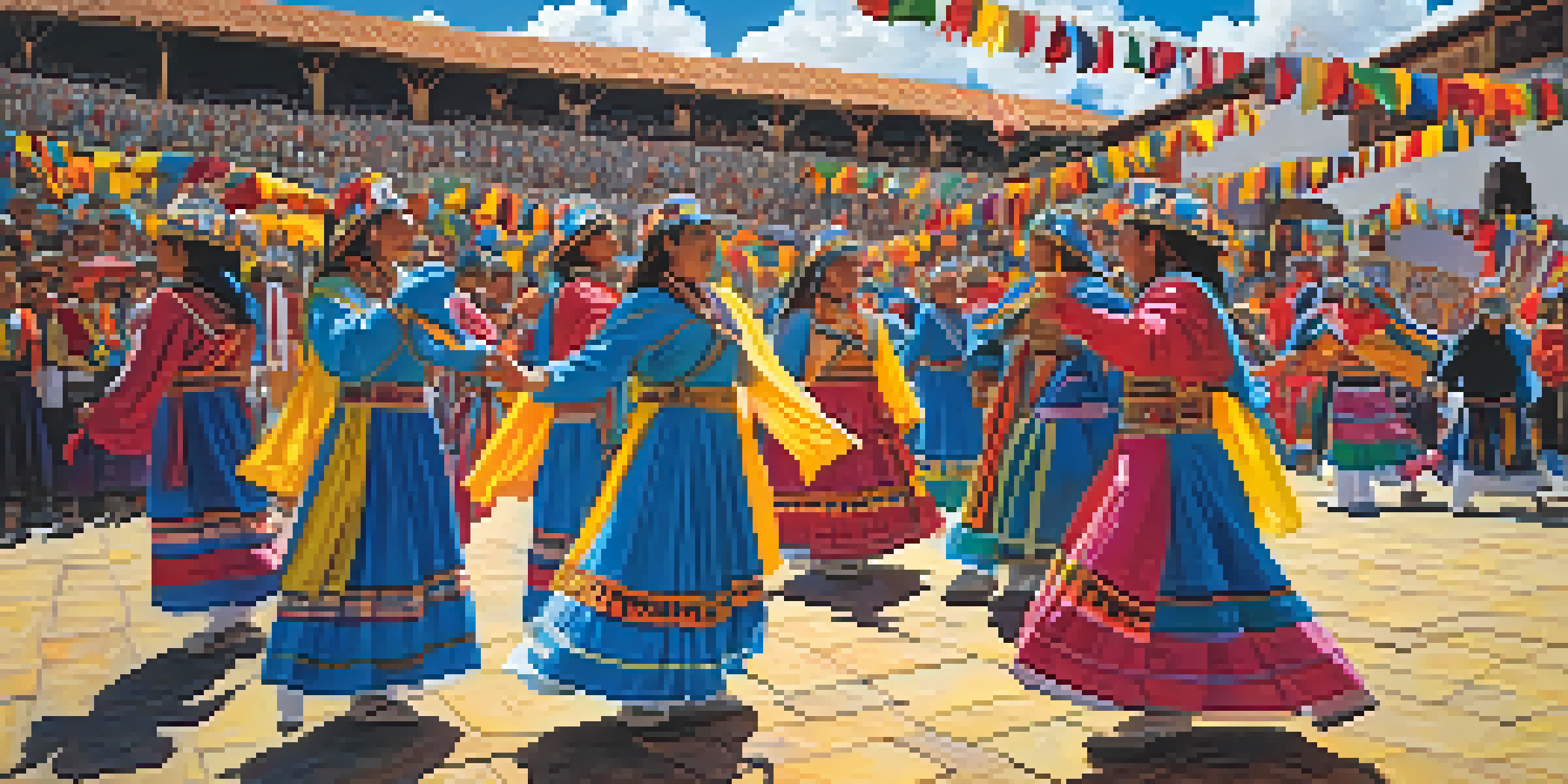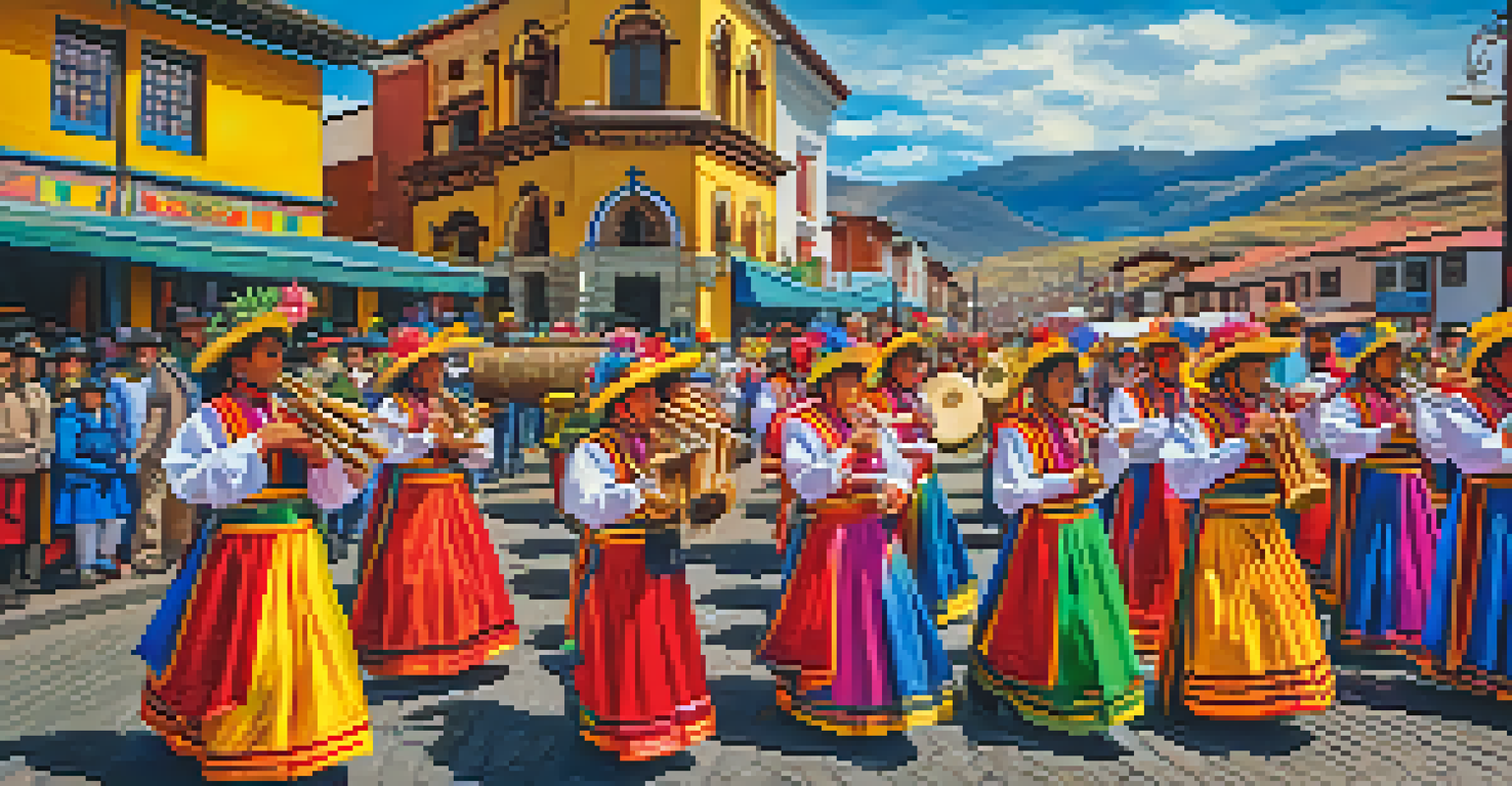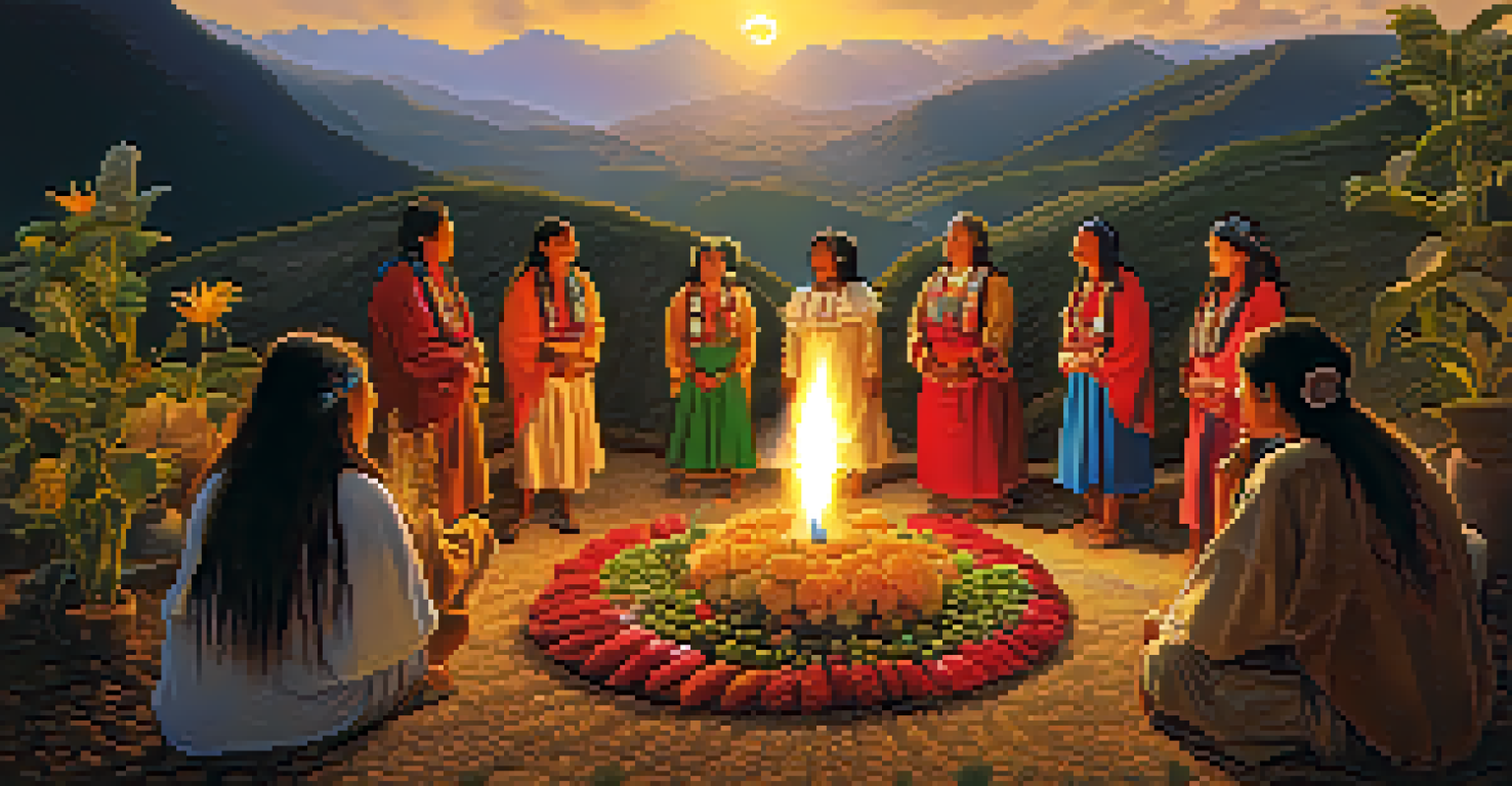The Cultural Importance of Peru's Indigenous Festivals

The Rich Tapestry of Peru's Indigenous Cultures
Peru is a country known for its rich cultural heritage, particularly its indigenous communities. These groups, such as the Quechua and Aymara, have preserved their traditions for centuries, deeply influencing the nation’s identity. This cultural tapestry is intricately woven with festivals that celebrate their history, beliefs, and connection to the land.
Culture is the widening of the mind and of the spirit.
Each festival serves as a vivid reminder of the indigenous people's resilience and creativity. They use music, dance, and colorful costumes to express their values and social structures. For example, the vibrant costumes worn during these celebrations are not just for show; they often symbolize ancestral stories and local myths.
Understanding these festivals is essential for appreciating Peru's cultural diversity. They offer a glimpse into the spiritual and communal lives of indigenous peoples, showcasing their customs and the struggles they face in modern society. The festivals are a celebration of life, community, and heritage, inviting everyone to partake in this unique experience.
Major Festivals and Their Significance
Among the most celebrated festivals is Inti Raymi, the Festival of the Sun, held every June in Cusco. This ancient Incan ceremony honors Inti, the sun god, and marks the winter solstice. The event draws thousands of visitors each year, showcasing traditional rituals that highlight the importance of agriculture and the sun’s role in sustaining life.

Another significant festival is the Virgen de la Candelaria in Puno, which combines indigenous and Catholic traditions. Celebrated in February, it features elaborate processions, music, and dance, reflecting the deep spiritual connections of the local people. The festival not only honors the Virgin Mary but also reinforces community bonds through shared faith and cultural pride.
Cultural Significance of Festivals
Indigenous festivals in Peru serve as vibrant expressions of cultural identity, showcasing traditions, music, and community bonds.
These festivals, among others, serve as platforms for cultural expression and preservation. They allow indigenous communities to assert their identity in a rapidly changing world, creating a space where traditions are celebrated and passed down through generations. Each festival is a vibrant expression of history, spirituality, and community.
The Role of Music and Dance in Festivals
Music and dance are at the heart of Peru's indigenous festivals, serving as powerful mediums of expression. Traditional instruments like the charango and pan flute create unique sounds that resonate with the spirit of the celebrations. These musical elements not only entertain but also convey stories of the past and present.
A people without the knowledge of their past history, origin and culture is like a tree without roots.
Dance, on the other hand, is a dynamic form of storytelling, often reflecting the rhythms of nature and cycles of life. Each dance has its own meaning, from fertility to harvest, showcasing the intimate relationship between the people and their environment. For instance, the 'Diablada' dance at the Virgen de la Candelaria represents the struggle between good and evil, captivating audiences with its dramatic choreography.
Through these artistic expressions, participants connect with their cultural roots and share their heritage with others. Music and dance foster a sense of belonging and community, inviting both locals and visitors to join in the celebration. This inclusiveness strengthens the cultural fabric of Peru, making these festivals a vital part of the nation's identity.
The Spiritual Connections Behind Indigenous Celebrations
At the core of many indigenous festivals in Peru is a deep spiritual connection to the earth and ancestors. Rituals often involve offerings to Pachamama, or Mother Earth, highlighting the importance of gratitude and respect for nature. This relationship emphasizes sustainability, as indigenous people view themselves as stewards of the land.
During these celebrations, prayers and offerings are made to honor deities and seek blessings for health, crops, and community well-being. For instance, during the Inti Raymi festival, participants make symbolic offerings to the sun, thanking it for its life-giving energy. This spiritual aspect reinforces the idea that the community thrives through a harmonious relationship with their environment.
Economic Benefits of Celebrations
These festivals attract tourism, boosting local economies and providing opportunities for artisans and small businesses.
These practices not only maintain spiritual beliefs but also strengthen communal ties. By participating in rituals together, communities reinforce their values and share their collective history. This spiritual dimension adds depth to the festivals, reminding everyone of the interconnectedness of life, tradition, and nature.
Preservation of Language and Traditions
Language plays a crucial role in the preservation of indigenous cultures, and festivals are a perfect opportunity to celebrate and promote local dialects. Many festivals feature songs, stories, and prayers in indigenous languages, helping to keep these languages alive for future generations. This linguistic preservation is vital in maintaining cultural identity and continuity.
Incorporating traditional languages into festivals enriches the experience, allowing attendees to connect more deeply with the culture. It also raises awareness about the challenges faced by these languages, many of which are endangered. By embracing and showcasing these languages during celebrations, communities assert their pride and commitment to cultural survival.
Moreover, festivals often include workshops and educational activities aimed at teaching younger generations about their heritage. This emphasis on language and tradition fosters a sense of belonging and encourages youth to engage with their roots. In this way, indigenous festivals become not just celebrations but also vital educational platforms.
Economic Impact of Indigenous Festivals
Indigenous festivals in Peru are not only cultural celebrations; they also play a significant role in the local economy. These events attract tourists, both local and international, creating opportunities for small businesses and artisans. From traditional crafts to food stalls, the economic benefits can be substantial, helping to support the community.
Additionally, the influx of visitors during festival seasons increases demand for various services, including hospitality and transportation. This boost can help sustain local economies and provide jobs for residents. The economic impact extends beyond the festival itself, fostering a greater appreciation for indigenous culture and heritage.
Challenges Facing Indigenous Traditions
Modernization and environmental changes pose significant threats to the preservation of traditional festivals and practices.
However, it’s essential that the economic benefits are balanced with respect for cultural integrity. Communities must ensure that their traditions are not commercialized to the point of losing their authenticity. Sustainable tourism practices can help preserve the essence of these festivals while maximizing their economic potential.
Challenges Facing Indigenous Festivals Today
Despite their significance, indigenous festivals face numerous challenges in today’s world. Globalization and modernization often threaten traditional practices, as younger generations may feel disconnected from their cultural heritage. This shift can lead to diminished participation in festivals, risking the loss of valuable customs and traditions.
Moreover, environmental changes and socio-economic pressures can impact the resources needed for these celebrations. Communities may struggle to maintain their festivals due to financial constraints or a lack of support from local governments. This situation highlights the need for increased awareness and support for indigenous rights and cultural preservation.

To combat these challenges, communities are finding innovative ways to adapt while staying true to their roots. By incorporating modern elements into traditional celebrations, they can attract younger audiences and engage with a broader demographic. This fusion of old and new can help revitalize interest in indigenous festivals, ensuring their survival for generations to come.